Chapter 11: Detecting Electric Submersible Pump Failures
Abstract
Electric Submersible Pumps (ESP) are currently widely employed to help enhance production for nonlinear-flowing wells with high production and high water cut. A broken shaft is common in the oil industry, which leads to production disruptions, resulting in significant economic losses. The objective of this chapter is to evaluate Principal Component Analysis (PCA) as an unsupervised machine learning technique to detect the cause of the breakage of the ESP shaft. This method was successfully applied in the Penglai block of the Bohai Oilfield in China to detect the ESP shaft fracture in real-time. A two-dimensional plot of the first two principal components can be used to identify different clusters in the stable region, unstable region, and failure region. In this way, potential ESP shaft fractures will be found when the cluster starts deviating away from the stable region. Moreover, a PCA diagnostic model is built to forecast the time at which the ESP shaft fracture will occur and to determine the main decision variable most responsible for the event. This paper demonstrates that the application of the PCA method performs well in monitoring the ESP system and forecasts the impending breakage of an ESP shaft with high accuracy.
Keywords
11.1. Introduction
11.2. ESP data analytics

11.3. Principal Component Analysis
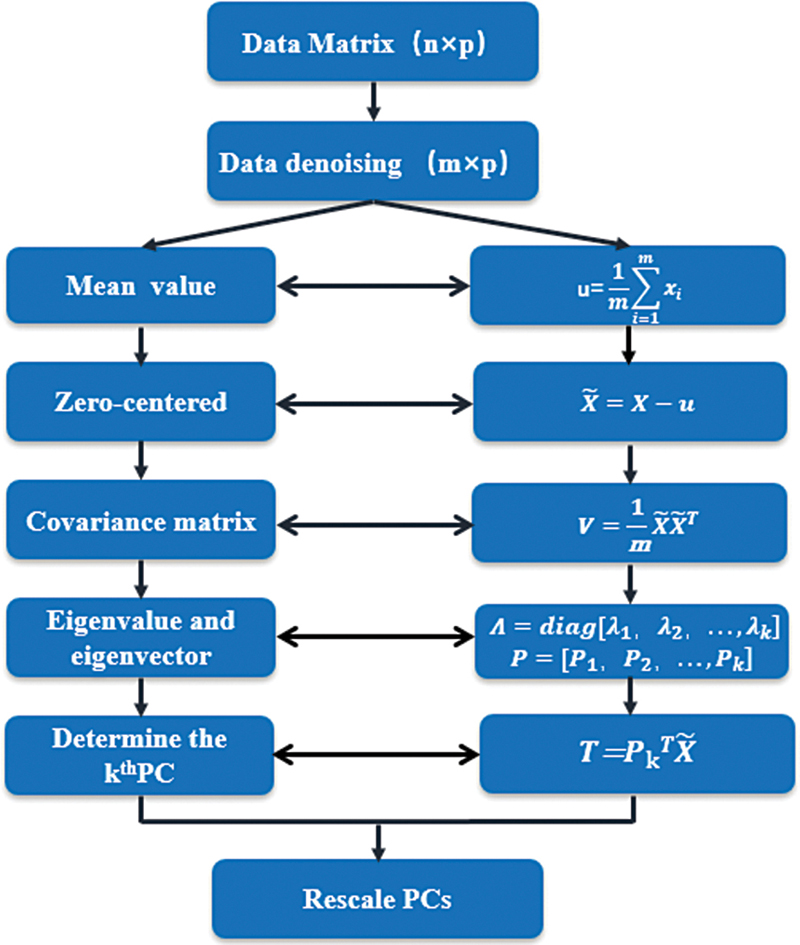

11.4. PCA diagnostic model
11.5. Case study: diagnosis of the ESP broken shaft
11.5.1. Selection of the ESP broken shaft variables
- • Data records containing input variable parameters of casing choke, casing line pressure, casing pressure, casing gas rate, ESP intake pressure, ESP discharge pressure, flowline pressure, flowline temperature, intake temperature, motor current, motor leak current, motor power, motor temperature, motor torque current, motor vibration, motor voltage, tubing choke, and VFD frequency.
- • Data records containing information on the time when the breakage of the pump shaft occurs in each well.
11.5.2. Score of principle components


11.5.3. Pump broken shaft identification
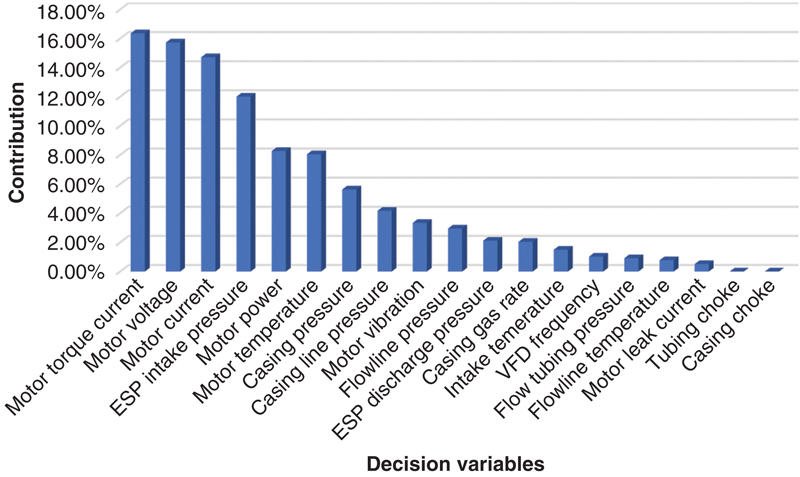
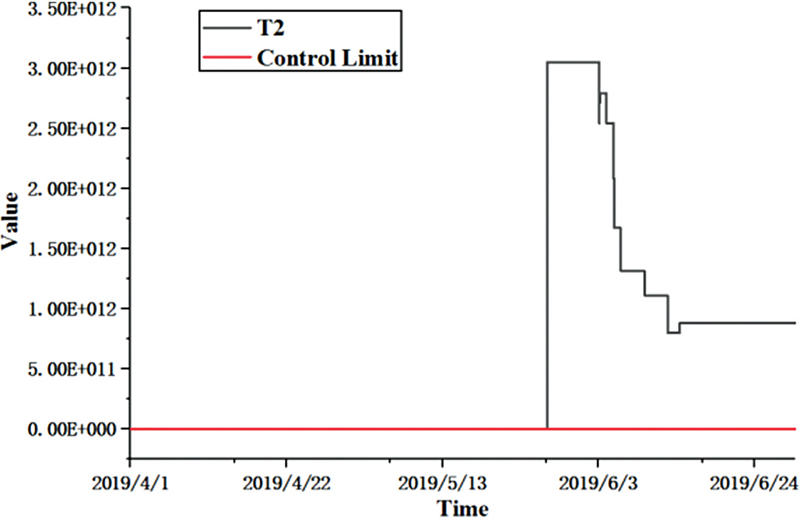

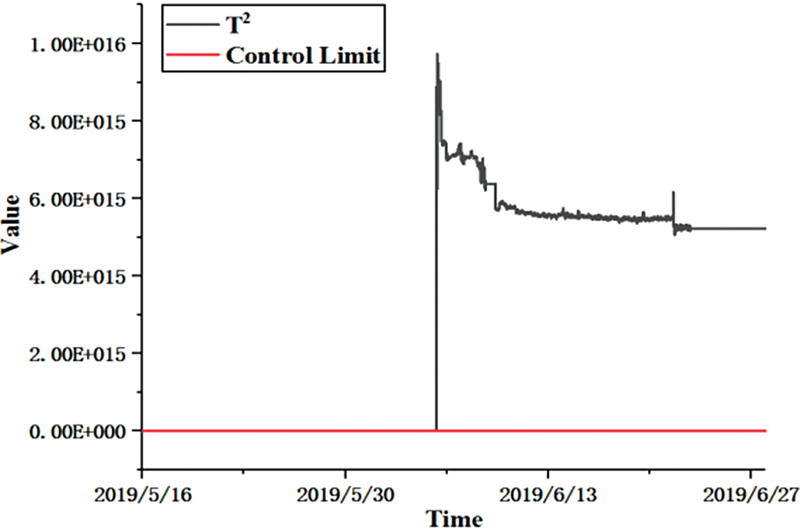


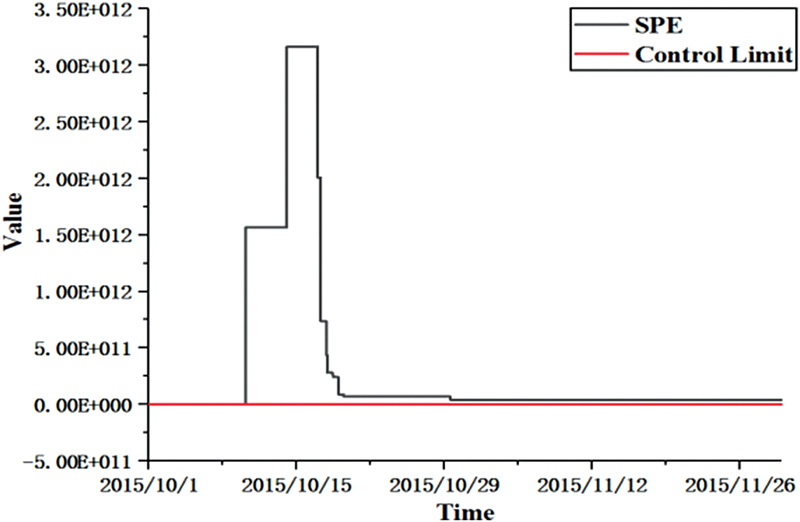
Table 11.1
| Wells no. | PCA model predictions | Actual breakage time |
|---|---|---|
| E52ST1 | 2019-5-26 13:40 | 2019-5-26 16:00 |
| CO6ST1 | 2019-5-27 22:20 | 2019-5-28 6:40 |
| B48ST1 | 2015-10-7 21:40 | 2015-10-8 16:20 |
| E20ST2 | 2019-9-12 10:20 | 2019-9-12 12:40 |
| B50ST2 | 2019-6-15 8:00 | 2019-6-16 15:40 |
| A11ST1 | 2015-5-10 4:40 | 2015-5-10 10:00 |
| B03ST1 | 2015-8-30 15:40 | 2015-8-31 1:00 |
| E21ST1 | 2015-8-26 10:00 | 2015-8-26 23:40 |
| E47ST1 | 2018-1-14 8:40 | 2018-1-15 9:20 |
| E42ST1 | 2018-4-24 22:40 | 2018-4-25 2:00 |
11.6. Conclusions
- 1. A two-dimensional plot of scores of Principal Component 1 and Principal Component 2 can be used to identify different clusters of the stable region, unstable region, and failure region. From this two-dimensional plot, field engineers will be reminded of potential ESP shaft fracture if the cluster is far away from the stable region.
- 2. Once a robust PCA diagnostic model is built, it is of great importance that the decision variables most responsible for the breakage of the ESP shaft will be determined to explain the deviation of the cluster from the stable region.
- 3. By implementing
and SPE equations, the PCA diagnostic model has excellent accuracy in predicting the ESP shaft breakage time.
- 4. PCA can be used as an important pre-processing method and as an unsupervised machine learning technique to predict the developing ESP failures.
